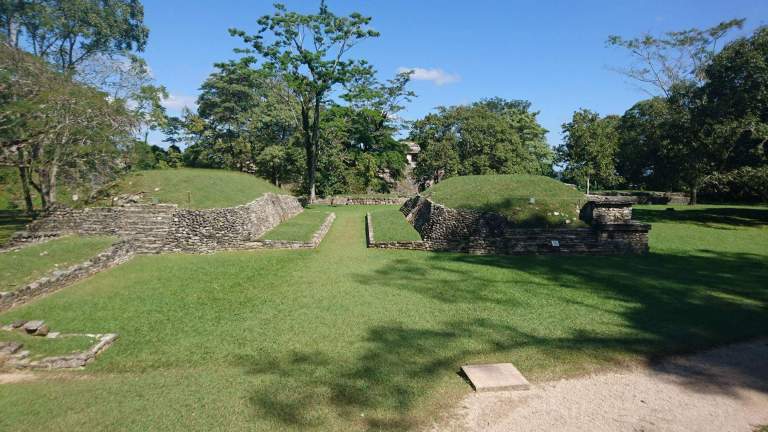The archeological zone just outside the town of Palenque, in the state of Chiapas, is home to a relatively small complex of pyramids, temples, and residential buildings. The complex is surrounded by an ecological park, containing waterfalls and jungle. If you so wish you can choose to take a small walk through the jungle, arriving at the ruins this way.
At its height, Palenque was a powerful Mayan city encompassing 25 square miles, though visitors to the site see only half a mile of the complex. Unlike many Mayan pyramids, the 75 foot high Temple of Inscriptions is hollow. It contains one of the only crypts found inside a Mayan temple in Mexico, and houses the tomb of a 7th century ruler of the city- Pakal. You can go inside the pyramid yourself to see the now empty tomb, which is still stained in its original red paint.
Palenque was at its most powerful between 500 and 700 AD, though the site was founded in the late pre-classic era, around the time of the founding of Christianity. One of the most interesting parts of the complex is an inner courtyard which contains carved figures representing specific war captives taken by the leader of the city. It was to this square that new captives were led, with the city leaders no doubt hoping to scare their new guests.
The city was home to a small ball court, and if you choose to walk through the ecological park on your way in or out of the complex you will see the remains of a number of residential buildings.
Palenque is considered by archeologists to be one of the most important Mayan sites, as the glyphs carved into the buildings allowed them to build the first timeline of rulers for a Mayan City. The records also state that the city came under attack from the nearby city of Calakmul both in 599 and 611. It was after this second attack that Pakal, entombed inside the Temple of Inscriptions, became ruler of the city at just 12 years of age. He would pass the city on to his son after his death.
The city was attacked again in 711, this time by the city of Tonina, and a subsequent decline in the building of elite houses in the city suggests a decline in power of the ruling elite. When the Spanish discovered the city in the 16th century, the Mayans had already abandoned it.
The Palenque ruins that we can see today cover only a small area, but are well worth a visit, even if only for the opportunity to go inside one of the pyramids and see the original colours still on the walls.
http://www.visitmexico.com/en/palenque
whc.unesco.org/en/list/411
http://science.nationalgeographic.com/science/archaeology/palenque/
Getting there and away:
You can take a collectivo from the town of Palenque to the ruins. These run extremely regularly and cost 20 pesos each way. The drive takes around 15 minutes.










Leave a reply